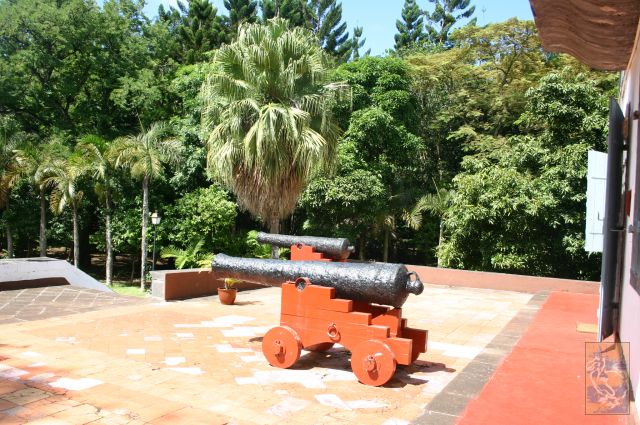National History Museum
About The Museum
The National History Museum highlights the social and cultural history of Mauritius, right from its discovery by the Portuguese at the start of the 16th century. It retraces the history of the successive colonisations of Mauritius by the Dutch, French and English, up to the end of the 19th century. The museum collection consists of diverse objects of ethnological and historical importance, documents, prints, paintings, maps, miniature sculptures by the Mauritian artist Prosper D’Epinay and marine archaeological finds from historic shipwrecks. The permanent displays occupy the first and second floors of the building.
On the first floor are found the Dutch, French and the Anglo-French wars sections. The Dutch section has early maps of the Indian Ocean and Mauritius (Arnoldes 1595, Leide). A very rare astrolabe bearing the year 1568 and retrieved from the shipwreck Banda (1615) is exhibited. It is the third oldest known Portuguese astrolabe. Also on display are rare blue and white Chinese porcelains from the Ming dynasty (Wan Li 1575 – 1620). Objects- gold and silver coins, buttons, buckle, silver taler, trading beads etc- from the Speaker, a pirate ship which wrecked at the mouth of Grand River South East on 7 January 1702, are presented.
The French period room houses old maps (Abbé de Lacaille 1753, Bellin 1763), prints and paintings of important French officials, furniture (bed of Mahé de Labourdonnais) and ceramics belonging to the French East India Company, artefacts and objects discovered on shipwrecks around Mauritius. One interesting item is the beautiful bronze bell from the shipwreck Saint-Géran (1744). Colour lithographs depicting Paul & Virginie are exhibited. The bowl of General Decaen, last French Governor of Isle de France is on display. One sedan chair and a palanquin, used by slaves for carrying people before proper roads were built in the beginning of the19th century, are also found in this room.
In the third room focus is on the struggle between the French and the British to control the Indian Ocean. Numerous objects pertaining to corsairs and the Naval Battle of Grand Port are presented. The artefacts come mostly from the shipwrecks La Magicienne and HMS Sirius, two British frigates sunk in the bay of Mahebourg in1810. Other items of interest include the pistol and portrait of Robert Surcouf, King of corsairs, the saber of Captain Drieux, and the sword and the telescope of Captain Rivington. A series of eight lithographs by R. Temple shows the capture of Isle de France by the British troops in December1810.
The second floor houses a permanent gallery on the British period of Mauritius (1810 up to the end of the 19th century). It tells the story of the transformation of the seaport economy into a land-based agricultural economy – the sugar industry. It depicts, inter alia, the slave trade and slavery, Indentured Labour, the Indian immigration and other facets of the peopling of Mauritius. This section displays old maps of Mauritius, prints (Engravings, lithographs, photographs), drawings, paintings, old Indian coins, artefacts of the Victorian period, a wooden chair belonging to R. Telfair, the Magistrate of Souillac and busts of British governors. Some railway items, including a model of a double-decker coach, are also on display to remind one of existence of a railway system in Mauritius from 1864 to 1964.

